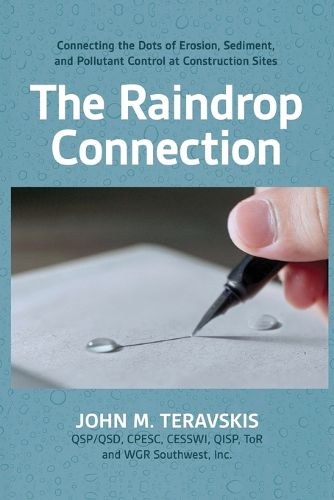Readings Newsletter
Become a Readings Member to make your shopping experience even easier.
Sign in or sign up for free!
You’re not far away from qualifying for FREE standard shipping within Australia
You’ve qualified for FREE standard shipping within Australia
The cart is loading…






This title is printed to order. This book may have been self-published. If so, we cannot guarantee the quality of the content. In the main most books will have gone through the editing process however some may not. We therefore suggest that you be aware of this before ordering this book. If in doubt check either the author or publisher’s details as we are unable to accept any returns unless they are faulty. Please contact us if you have any questions.
Connect the dots between soil science and construction practices to prevent storm water pollution.
Discover best practices for keeping communities safe after storms and natural disasters from an expert storm water professional. In The Raindrop Connection, author John M. Teravskis considers erosion and the science of sediment as it relates to implementing safe and sustainable construction practices. For Teravskis, the key to compliance is making connections between theory and practice while balancing the consequences of one's actions with water supplies in need of protection. From start to finish, Teravskis assesses each step of a construction project, connecting the dots from
erosion and sediment theory pollutant source assessment best management practices Storm Water Pollution Prevention Plan development effective monitoring programs final site stabilization
to healthy water quality and retention.
While the book is filled with technical content, the tone is intentionally conversational, sprinkled with subtle humor, personal anecdotes and real-life, practical illustrations that will appeal to non-technical as well as technical readers. Informative and innovative, the book also acts as a guide for construction workers, engineers, environmental consultants, or municipal staff members on how to comply with the Clean Water Act and any applicable state laws.
$9.00 standard shipping within Australia
FREE standard shipping within Australia for orders over $100.00
Express & International shipping calculated at checkout
This title is printed to order. This book may have been self-published. If so, we cannot guarantee the quality of the content. In the main most books will have gone through the editing process however some may not. We therefore suggest that you be aware of this before ordering this book. If in doubt check either the author or publisher’s details as we are unable to accept any returns unless they are faulty. Please contact us if you have any questions.
Connect the dots between soil science and construction practices to prevent storm water pollution.
Discover best practices for keeping communities safe after storms and natural disasters from an expert storm water professional. In The Raindrop Connection, author John M. Teravskis considers erosion and the science of sediment as it relates to implementing safe and sustainable construction practices. For Teravskis, the key to compliance is making connections between theory and practice while balancing the consequences of one's actions with water supplies in need of protection. From start to finish, Teravskis assesses each step of a construction project, connecting the dots from
erosion and sediment theory pollutant source assessment best management practices Storm Water Pollution Prevention Plan development effective monitoring programs final site stabilization
to healthy water quality and retention.
While the book is filled with technical content, the tone is intentionally conversational, sprinkled with subtle humor, personal anecdotes and real-life, practical illustrations that will appeal to non-technical as well as technical readers. Informative and innovative, the book also acts as a guide for construction workers, engineers, environmental consultants, or municipal staff members on how to comply with the Clean Water Act and any applicable state laws.